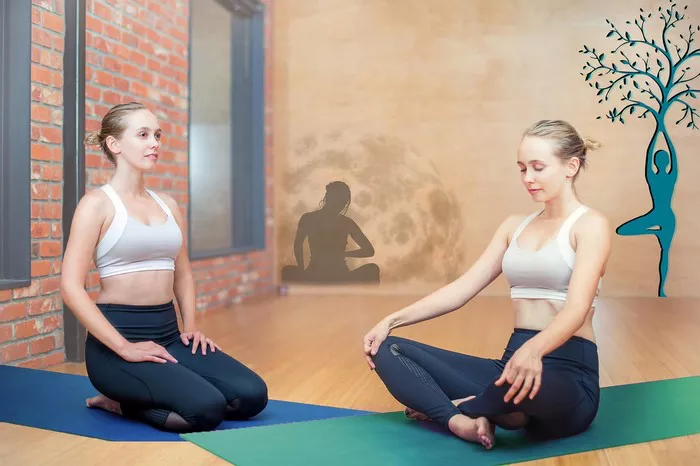Sivananda Yoga is a traditional form of yoga that follows the teachings of Swami Sivananda, a revered spiritual leader and yogi of the 20th century. This yoga system was popularized by his disciple, Swami Vishnudevananda, who established the Five Points of Yoga to create a structured and holistic approach to physical, mental, and spiritual well-being. These five principles serve as a foundation for a balanced and healthy life, making yoga accessible to people of all ages and backgrounds.
In this article, we will explore the Five Points of Yoga as taught in the Sivananda tradition and how they contribute to overall well-being.
1. Proper Exercise (Asanas)
Proper exercise in Sivananda Yoga refers to the practice of yoga postures, also known as asanas. These postures are designed to enhance flexibility, strengthen the muscles, and promote overall physical health. Unlike conventional workouts that may focus solely on strength or endurance, yoga asanas emphasize fluid movements, deep breathing, and mindfulness.
The twelve basic asanas in the Sivananda system include:
- Headstand (Sirsasana)
- Shoulderstand (Sarvangasana)
- Plough Pose (Halasana)
- Fish Pose (Matsyasana)
- Sitting Forward Bend (Paschimottanasana)
- Cobra Pose (Bhujangasana)
- Locust Pose (Shalabhasana)
- Bow Pose (Dhanurasana)
- Spinal Twist (Ardha Matsyendrasana)
- Crow Pose (Kakasana) or Peacock Pose (Mayurasana)
- Standing Forward Bend (Pada Hastasana)
- Triangle Pose (Trikonasana)
Each of these asanas has unique benefits, ranging from improving circulation to increasing energy levels and calming the nervous system. By practicing these postures daily, practitioners develop flexibility, strength, and a heightened awareness of their bodies.
2. Proper Breathing (Pranayama)
Breathing is an essential aspect of life, yet most people do not breathe deeply or correctly. Proper breathing, or pranayama, is the second point in Sivananda Yoga. It involves conscious control of the breath to increase oxygen intake, balance energy levels, and calm the mind.
Some key pranayama techniques include:
Kapalabhati (Skull Shining Breath): A cleansing practice that helps clear the respiratory system and energize the mind.
Anulom Vilom (Alternate Nostril Breathing): A technique that balances the two hemispheres of the brain and promotes mental clarity.
Bhastrika (Bellows Breath): A powerful practice that increases lung capacity and revitalizes the body.
Bhramari (Bee Breath): A soothing breathing technique that helps reduce stress and anxiety.
By incorporating pranayama into daily practice, individuals experience improved lung function, reduced stress, and a more balanced state of mind.
3. Proper Relaxation (Savasana)
Proper relaxation is often overlooked but is an essential part of maintaining good health. In Sivananda Yoga, relaxation is given as much importance as exercise and breathing. The practice of relaxation allows the body to release tension, rejuvenate the nervous system, and restore energy.
Relaxation is practiced in three levels:
Physical Relaxation: Through conscious awareness, the practitioner releases tension from different parts of the body.
Mental Relaxation: The mind is guided into a state of calmness and detachment from external distractions.
Spiritual Relaxation: The deepest level of relaxation, where the practitioner connects with their inner self and experiences profound peace.
Savasana, or the Corpse Pose, is the primary posture used for deep relaxation. It is performed at the end of a yoga session to integrate the benefits of the practice and promote a state of tranquility.
4. Proper Diet (Vegetarian Diet)
Diet plays a crucial role in physical health, mental clarity, and spiritual progress. The Sivananda Yoga tradition advocates for a sattvic diet, which consists of natural, plant-based foods that nourish the body and promote a peaceful mind.
A Sattvic diet includes:
- Fresh fruits and vegetables
- Whole grains
- Nuts and seeds
- Dairy products (for those who consume them)
- Herbal teas and pure water
Foods to avoid in a yogic diet include:
- Processed and junk foods
- Excessively spicy or fried foods
- Meat, fish, and eggs
- Alcohol and caffeine
Eating fresh, whole foods enhances energy levels, reduces toxins in the body, and promotes a balanced and harmonious lifestyle.
5. Positive Thinking and Meditation (Vedanta & Dhyana)
The final point in Sivananda Yoga is the cultivation of a positive mindset and the practice of meditation. Positive thinking, or Vedanta, is the study of spiritual wisdom that helps individuals cultivate inner peace and resilience. It teaches that our thoughts shape our reality and that maintaining an optimistic and compassionate outlook leads to a more fulfilling life.
Meditation, or Dhyana, is the practice of focusing the mind and achieving inner stillness. Regular meditation brings numerous benefits, such as:
- Reduced stress and anxiety
- Improved concentration and mental clarity
- Increased self-awareness and emotional stability
- A deeper sense of connection to oneself and the universe
A simple meditation practice in the Sivananda tradition involves sitting quietly, closing the eyes, and focusing on the breath or a mantra such as “Om.” Over time, this practice deepens one’s spiritual awareness and fosters a sense of inner peace.
Conclusion
The Five Points of Yoga, as taught by Swami Sivananda and Swami Vishnudevananda, provide a comprehensive framework for a balanced and fulfilling life. By integrating proper exercise, breathing, relaxation, diet, and positive thinking with meditation, individuals can achieve physical health, mental clarity, and spiritual growth.
Sivananda Yoga is not just a practice but a way of life that promotes holistic well-being. Whether you are a beginner or an advanced practitioner, incorporating these five principles into your daily routine can lead to profound transformations in your body, mind, and spirit.
Related Topics:





















